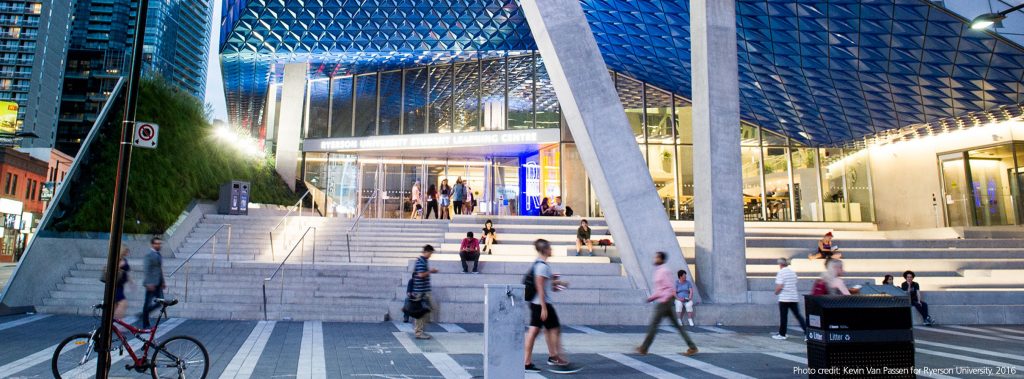
Headlines
News
Ricoh Canada partners with Ryerson University to drive print innovation
November 27, 2020 By PrintAction Staff
 Ricoh Canada partners with Ryerson University to drive innovative graphic capabilities. Photo: Ricoh Canada Inc.
Ricoh Canada partners with Ryerson University to drive innovative graphic capabilities. Photo: Ricoh Canada Inc. Ricoh Canada Inc. has installed its Pro TF6250 wide format UV LED printer in the Creative Technology Lab at Ryerson’s Faculty of Communication and Design (FCAD).
In addition to the printer installation, Ricoh will additionally collaborate and host joint workshops, showcasing real-life applications including on-site and remote demonstrations, while providing hands-on experience using its Commercial and Industrial Print (CIP) technology and services.
The Ricoh Pro TF6250 allows students to digitally produce an endless range of products on rigid substrates up to 4.3 inches thick, including foam core, wood, metal, acrylic, glass and more. The CMYK plus dual-white or white plus clear and primer configurations address the unique workflow and application needs of its users. The features of the Pro TF6250 allow it to be used in the GCM curriculum, allowing students to create and print course content, materials and samples.
“I am really excited about the collaboration between Ricoh Canada and Graphic Communications Management at FCAD, and what it means for our students. The Ricoh TF6250 printer will enable the school to expand its packaging and large format sign and display curriculum in ways not before possible, providing our students with dynamic experiential learning opportunities,” said Jason Lisi, chair of Graphic Communications Management at FCAD, Ryerson University. “I am especially thrilled that this device has found a home in the Creative Technology Lab at FCAD, where it can be used not only by the Graphic Communications Management students but by all students across FCAD’s 26 programs.”
Jonathon Anderson, director at the Creative Technology Lab at Ryerson, added that the printer will be fully integrated into the technology workflow, and will directly connect with the features of other machines at the lab. He went on to note that the printer can be used on large packaging and point-of-sale designs for GCM students, printing theatre backgrounds for the School of Performance, archival prints on glass for the School of Image Arts, and interior finishes in the School of Interior Design, among other uses.
Print this page